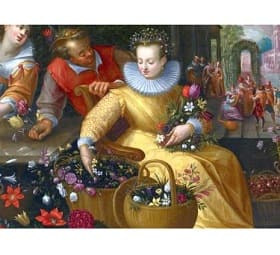The new exhibition at Casa dei Carraresi will be dedicated to Japan: “The opening of the exhibition could only be dedicated to the combination of Geisha and Samurai.”
In fact, traditional Japan is a country populated by beautiful women, geisha and bold warriors, samurai. The military class dominated the Land of the Rising Sun for a very long time, from the 12th to the mid-19th century, imposing its political will and developing a very refined culture whose echo is still felt in many areas today. The geisha, or more generally the feminine beauty as we understand it (oval face sprinkled with white powder, very elegant clothes and cadenced ways), has represented for Japan an equally rooted cultural topos, from the very cultivated court ladies of the Heian period (794-1185) to the courtesans who lived between the seventeenth and nineteenth centuries, so well immortalized by Kitagawa Utamaro (1753-1806), the painter who better than any other returned the liveliness of the pleasure districts of Edo (now Tokyo). From the world of men to the crowded world of gods, a synthesis of autochthonous beliefs and influences from the Asian continent. Buddhism, in particular, of Indian origins, arrived in the archipelago through China and Korea. It deeply permeated Japanese thought, especially in its variant of Zen, which in this section is witnessed by a group of paintings in the format of the vertical scroll depicting Daruma, the mythical founder of this sect.
This fascinating approach to Japanese art and culture continues by introducing the daily life of its people: from entertainment activities such as the Kabuki theater, from the use of the kimono to the predilection of Japanese artists for micro-sculpture. Of the latter we find example in the core of accessories related to the consumption of tobacco smoke. No less fascinating is the path that sees the traditional stories and themes related to literature, becoming refined subjects of paintings. The highlight of the great exhibition is reserved for the relationship between the Japanese and nature, which in Shinto, the native philosophical and religious doctrine of the archipelago, is an expression of divinity. This privileged relationship with Nature is investigated here through a series of paintings on vertical rolls, part of which were made between the nineteenth and twentieth centuries, at the dawn of modern Japan. In the mid-nineteenth century, after more than two centuries of conscious isolation, the country decided to open up to the world. Thus, in the space of a few decades, Japan advanced with conviction towards modernity. Meanwhile Europeans and Americans began to appreciate the superfine arts of that people and many came to discover the mythical archipelago. The changed scenario led many artists to adopt foreign techniques and styles, and many artisans to produce works explicitly intended for foreign buyers. Among the unpublished art forms for Japan of those times, the photograph of author occupies without doubt a place of election. Foreigners who visited the archipelago very often bought photographs to preserve and share a memory of that mysterious and beautiful country. This is the case of the unknown who acquired the nucleus exhibited in the exhibition, who noted in Spanish, alongside the photographs, the descriptions of the places and activities depicted in his shots. The last room is reserved for one of the most complex and at the same time most fascinating art forms in Japan: writing. Large screens adorned with powerful calligraphies conclude the exciting exhibition itinerary.

